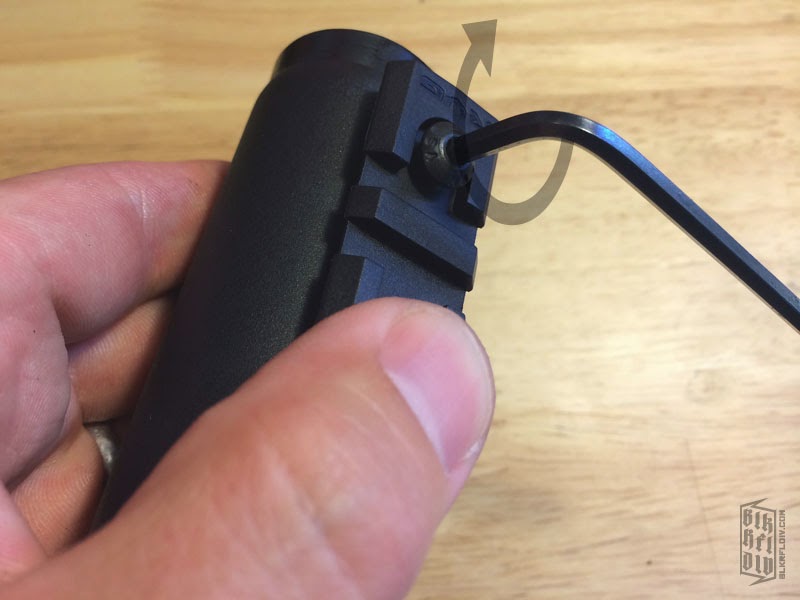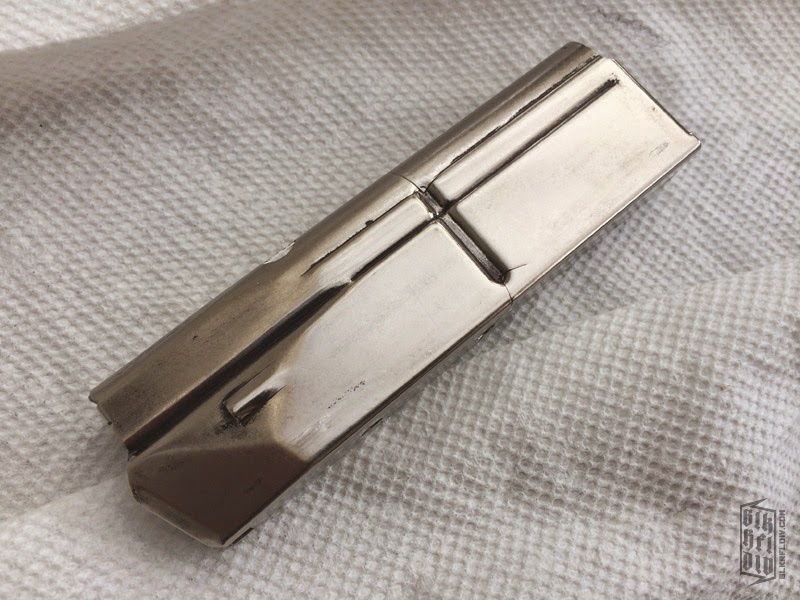Before doing any modifications, consider the type of light system you would like to deploy; will it be a momentary on/off button, a continuous light, do you want to use your thumb or index finger to manipulate the light system, will you have a pressure switch, how is the stream on the light you plan to use, will it blow out your front sight, should it be placed above, below, or to the side of the handguard? Questions to consider before you do anything.
[1] Remove the Gastube Handguard
First and foremost, safety is paramount, so secure your firearm and be sure it is completely unloaded. Once safe, break down your AK and remove the gastube.
If you don't have a table vice, it might be a bastard to remove or it could easily slide out. One way to do it is by holding the metal gas tube with one hand and then grasp the polymer handguard with the other hand, holding it out in front of you like you are holding onto the handle-bars of a bike, then rotate the two parts in opposite directions with your hands. Wearing a pair of gloves will help to get better traction.
[2] Mount the Rail Section
A 2 slot MOE RVG rail section is ideal for mounting on the gastube handguard, because of it's size, as you really don't need anything larger to mount a light system, and specifically because of the size of the mounting brackets. The standard Magpul rail sections, as pictured above on the left side, come with mounting brackets that are twice the size and not a desirable option IMO. However, I did use these brackets to mount a 5 slot rail section on my DRACO (see last pictures on entry) and the brackets make contact with the gastube. A Dremel cutting wheel will effectively reduce the size.
Next, figure out where you want to place the rail section. I opted for the front, right side of the handguard.
If you want it on the left side, so that you can use your thumb to turn the light on/off, be aware of the sling attachment and if this location will be an issue. As previously mentioned, I strongly suggest placing you light system on the handguard prior to doing any mods to assess if this is even a direction you want to go for mounting your light.
Take a pencil and mark the areas that need to be drilled out.
A drill bit will easily punch through the polymer handguard. In fact, a X-Acto knife will also accomplish the job, as pictured above. Limit the amount of material you remove, because you want to allow for a snug fit for the screws to reduce any wobble.
Start the screw off first, don't worry about the interior bracket yet. Once the screw is in place and slightly protruding on the opposite side, set up the interior bracket, and continue tightening the screw.
Don't tighten down the first screw all the way, wait until you have both screws and both brackets in place before doing a final tightening. Do not over tighten, it is not necessary considering the screws (should) have thread locker on them.
[3] Reassemble & Verify Fit
If everything is firmly in place and you are satisfied with fitment, reinstall the handguard onto the gastube. It would be desirable not to scratch up the gastube and you can accomplish this by making sure that the rail section is rotated in at the end of the rotation. As you can see in the picture above, the rail section is on the opposite end of the rotation, thus it slides on last. Additionally, you can use a Dremel tool to cut down the ends of the screw threads, possibly even polishing them down. I would recommend this.
As seen below, it was trial and error for me, those nicks could have easily been avoided. Not sure if you can make it out in the picture, but the screw ends are not contacting the gastube. Furthermore, the screws were not ground down as suggested in the previous paragraph. They were Dremeled down on my DRACO.
The gastube was then reinstalled onto my SGL-31 and a light system mounted.
[Click on images to enlarge]
As seen in the images above, the locking mechanism for the VLTOR light clamp has to be on top in order to be accessible. This may not be aesthetically pleasing for many, as well as, an undesirable hang-up point. The bulge on the front end of the lower handguard makes it impossible to tighten the light mount from below.
Following are pics of an Inforce WML mounted on the 2 and the 5 panel rails. I also included a couple of of my cheap POS handgun light mounted on the 5 slot panel on my Draco. If someone has a SureFire X300U that they can send me for testing, please do!
Final Notes. There are a lot of quality aftermarket rails that are available for purchase that can accommodate optics and light systems. There are also cost effective barrel clamps that can be used to mount accessories. RS makes a picatinny barrel clamp, the BM-1, which retails around $60. I believe UTG makes a couple of low-cost options, but I have not tried any of them. I love the fit & feel of the standard polymer handguards and I do not use VFGs or AFGs on my AKs or any of my ARs. I also not require optics to be mounted on the front handguards of my AK variants, thus I opted for this setup. It may or may not be the best solution for your platform, but now you have all the information you need to make a decision on how to proceed. Spend $5 on a 5 slot panel and save the rest of the money for an solid light system? You decide. Set it up the way you like, if it works, run it, if it doesn't, change it. Good luck.



































